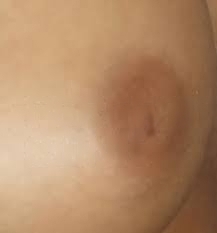correction of inverted nipples
What is the correction of inverted nipples ?
 The correction of inverted nipples is a surgery that aims to treat nipples that have sunk inwards rather than protruding normally. This condition, also known as inverted nipples, can cause physical and psychological discomfort in some people.
The correction of inverted nipples is a surgery that aims to treat nipples that have sunk inwards rather than protruding normally. This condition, also known as inverted nipples, can cause physical and psychological discomfort in some people.
What causes inverted nipples ?
Inverted nipples, also called inverted or inverted nipples, can be caused by birth defects, such as lack of milk duct development or excess fibrosis in the nipple area. Inverted nipples can also be caused by injury, natural aging, or previous surgery. In some cases, they can be a sign of underlying medical conditions, such as infection, mastitis, or breast cancer.
Is it painful ?
The correction of inverted nipples can be slightly painful, but it depends on the technique used and the pain tolerance of each patient. Sometimes simple manual manipulation can help pop the nipple out, without the need for anesthesia or surgery. In other cases, minor surgery may be needed to correct inverted nipples, which involves a small incision to release the milk ducts that pull the nipple inward. In any case, your doctor may give you medication to control pain during and after the procedure.
What treatments are available ?
There are several treatments available to correct inverted nipples. Here are some common options:
Stimulation techniques: In some cases, inverted nipples can be corrected using manual stimulation techniques or through specific devices designed to gently pull the nipple outwards. These techniques may be effective for some women, especially those whose nipples are not heavily inverted.
Nipple piercing: Nipple piercing can be used as a corrective method for some cases of inverted nipples. Nipple jewelry can help maintain the nipple's outward projection. However, this option is not suitable for everyone and should be discussed with a qualified professional.
Surgical correction: Surgical correction is a more definitive option for cases of inverted nipples persistent or more severe. There are different surgical techniques to correct inverted nipples, such as releasing adhesions, deep tissue excision or reconstruction of the areola-nipple complex. Your plastic surgeon will be able to determine the best technique for your specific case.
What are the criteria for being a candidate ?
The criteria for being a candidate for the correction of inverted nipples can vary depending on the different treatment options available. However, in general, ideal candidates for an inverted nipple correction include:
People who experience difficulty or pain when breastfeeding.
People who suffer from frequent changes in the shape of the nipple.
People who are unhappy with the appearance of their inverted nipples.
People with breast disease or breast cancer may be excluded from inverted nipple correction as it may affect their treatment.
How is the surgery performed ?
This is a procedure that is performed by a plastic surgeon, under local or general anesthesia depending on the characteristics and complexity of the intussusception. During the procedure, the surgeon may stretch and/or release adhesions in the milk ducts to allow the nipple to return to its normal shape.
The duration of the procedure depends on the chosen method and the degree of complexity of the intussusception. In general, surgery can be performed on an outpatient basis, without the need for hospitalization.
How long does it take to recover ?
Recovery after surgery to correct inverted nipples depends mainly on the surgical technique used. Generally, it will take a period of two to four weeks for full recovery. During this period, you should avoid strenuous physical activity and wear a comfortable bra.
Bruising, swelling or pain may be felt for the first few days after surgery, but should subside over time. Your surgeon will provide you with specific postoperative care instructions to minimize the risk of infection and other complications.
What are the expected results ?
The expected results of the correction of inverted nipples vary depending on the technique used, the severity of the intussusception, and the patient's individual response to treatment. Here are some general results you can expect:
Nipple projection: The main goal of correcting inverted nipples is to achieve normal and adequate outward projection of the nipple. After the correction, the nipple should be more prominent, protruding and visible.
Aesthetic appearance: The correction of inverted nipples also aims to improve the aesthetic appearance of the nipple and areola. The overall look should be more symmetrical, natural and balanced, which can contribute to better self-esteem and self-confidence.
Nipple tenderness: In some cases, correcting inverted nipples can also improve nipple tenderness. However, this will depend on the extent of the surgery and the individual characteristics of the patient.
Physical comfort: After correction of inverted nipples, many women report improved physical comfort, as problems of friction, pain or tenderness associated with intussusception can be reduced.